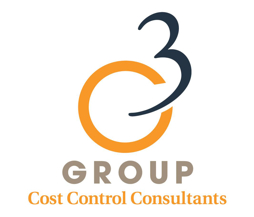Level-funding is quickly becoming the fastest growing trend in controlling employer-sponsored health insurance costs.
WHAT IS A LEVEL-FUNDED PLAN?
A level-funded health plan, also known as a partially self-funded plan, is a health insurance plan that combines the cost savings and customization aspect of a self-funding plan with the financial safety and predictability of fully funded plans. Level-funding is a form of self-insurance because an employer pays a steady fee each month.
Level funded health plans have recently been attracting more attention among smaller employers because there is little to no risk involved and they are exempt from ACA-mandated requirements. Here are the four main components that make up a level-funded plan: 
- Administrative Costs: Administrative costs are fixed and charged per employee and will not change regardless of claims. Employers must pay these costs for network availability, claims adjudication, and prescription network.
- Aggregate Stop Loss Coverage: Aggregate stop loss coverage covers the entire workforce and acts similarly to the way a family deductible would for employees. Once either the group’s aggregate stop loss or an employee’s specific stop loss has been met, reinsurance takes over and pays the claims from there.
- Claims: This is the variable portion of level-funded health plans, but also where the most cost savings can occur. Unfortunately, this is an area where level funded health plans provide opportunities for carriers to increase their profits at the expense of an employer. As with a fully-insured plan, the insurance carrier estimates the cost that an employer’s group policy will charge for the year (including all four components) and then divide that number by the total number of employees. This number equals each person’s total premium, before it is split between the employer and employee. The difference with level-funded health plans is that if the claims are lower than originally expected, the insurance company will refund part or the full amount of the unused funds back to the employer.
- Individual Stop Loss Coverage: Employers pay this stop loss insurance to remain protected in the event that an individual claim is extremely high in a given plan year. If this individual claim hits the stop loss deductible, the reinsurance reimburses the employer for the claims.
BENEFITS OF LEVEL-FUNDED PLANS
There are many benefits of level-funded plans, to both employees and employers, including:
- Cost Savings: Fully insured health plans remove most of the risks from the employer, making the cost of the plan much higher for the employee. In contrast, a self-insured plan places the most of the risk on the employer, but has the greatest chance for producing savings in the form of claims being lower than premiums for the employee. Therefore, Level-funded health plans are the best of both worlds, making partial self-funding an easier and attainable option for a larger portion of employers, like small businesses. These plans save money for both the employee and the employer!

- Plan Design: Level-funded health plans provide employers with far more flexibility in plan design and are exempt from some ACA regulations such as the 80/20 rule we talk more about below.
Regulation: Level-funded plans, even for small groups, do not have the same regulatory requirements as traditional, fully insured plans. This usually means that less administrative work is required from smaller companies who don’t have the same staffing size as larger ones. - Regulation: Level-funded plans, even for small groups, do not have the same regulatory requirements as traditional, fully insured plans. This usually means that less administrative work is required from smaller companies who don’t have the same staffing size as larger ones.
